Rangers, the historical club in the Scottish Premiership, are on their way back after Michael Beale’s return to Ibrox but this time as manager after Giovanni van Bronckhorst’s departure.
The 42-year-old manager was a part of Steven Gerrard’s staff who won the Scottish title in 2020/21, the first in a decade and the 55th league for Rangers. He followed Gerrard to Aston Villa later.
“100 per cent” was a direct answer from Beale when asked if Rangers can get back to the top with him and if he is confident he is on track to deliver trophies sooner. “But in my first year as a manager, what was I investing in? The future” he added.
Beale always insists he can return Rangers to the top of the Scottish again after Celtic’s domination hence, this tactical analysis, in the form of a team scout report, dives into his tactics at Ibrox and what makes them unbeaten in the league under his guidance.
In-possession approach
Generally, Michael Beale believes that playing from the back directly is important to reach the final third where his team attempts overloads and combinations play to disturb the opposition’s backline. Beale knows the final outcome is not performance but results and that reflects in his approach.
The English coach is a big admirer of the fluidity and flexibility around the pitch and said before that the formation is not all that important, so when varying between the flexible 4-2-3-1 and 4-3-3, the in-possession 4-3-3 is the primary structure.
Rangers try to build the play from the deep in a flexible way where the no.6 drops between the centre-backs, meanwhile, the fullbacks move up further or the defensive midfielder keeps his position, based on the situation.
From this point on, Beale is instructing and training his players to have the intelligence to move in and out of different zones to execute some of the attacking variations to reach the goal as quickly as possible. The game is more general way always about trying to find ways to give your team numerical superiority as he said.
Rangers’ attacking variations and ideas are demanding on different movements from the midfielders and the three forwards in front. Gaining fluidity and dictating the length of the pitch are the primary ones where Todd Cantwell, Beale’s first signing, is important.
The first and main idea of dictating the length is initialising the situations to reach the dropping striker between the lines by a direct laser pass.
Here, in the below scene, the left-back reaches Morelos who drops and then combines with the winger. Meanwhile, Cantwell intends to attack the backline and space had been produced by this attitude.
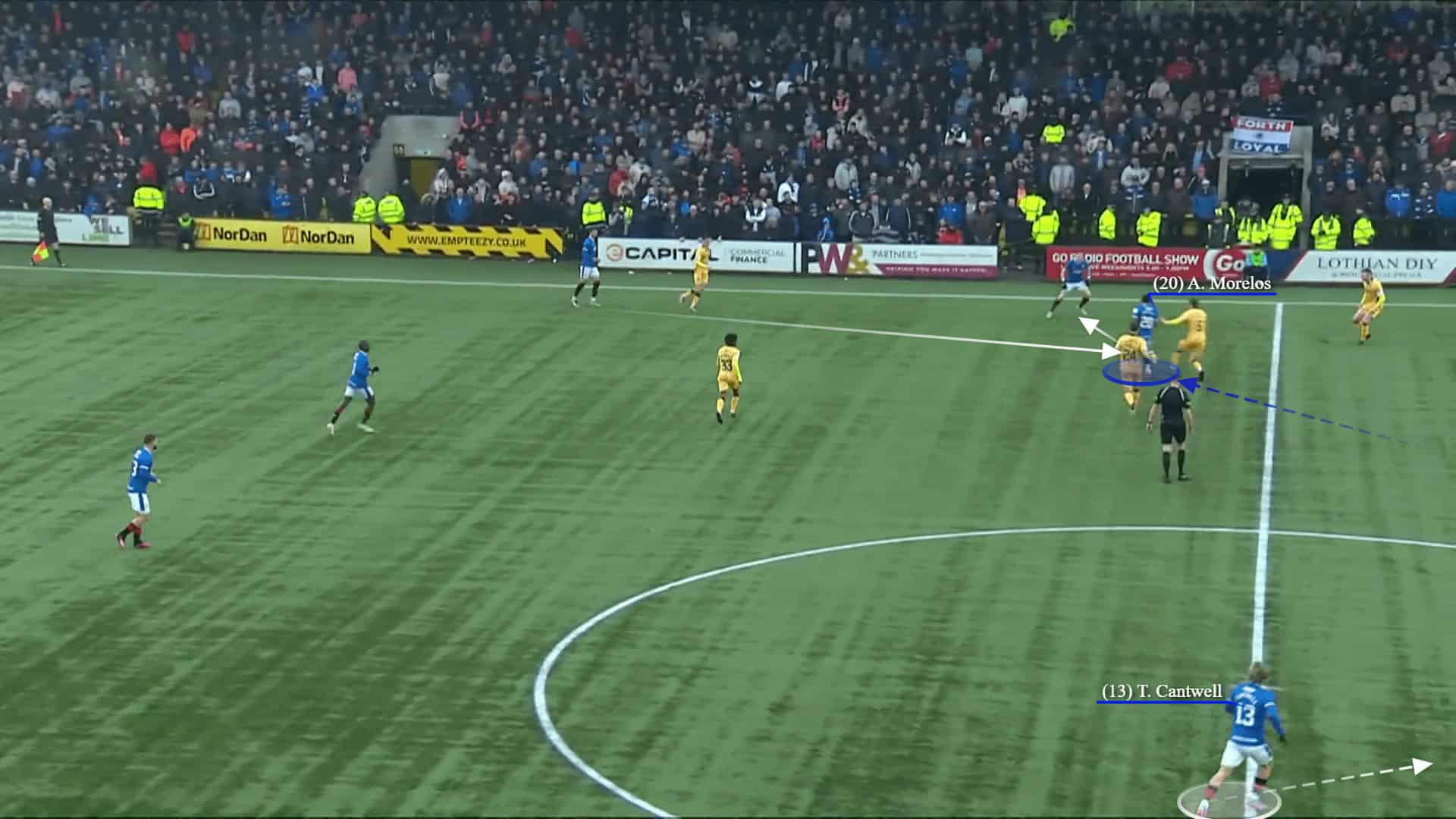
The midfield becomes more fluid to drop or attack different zones. Here, Kamara drops between the centre-back which gives the left CB roam to move forward and ready to reach the striker with a forward pass.
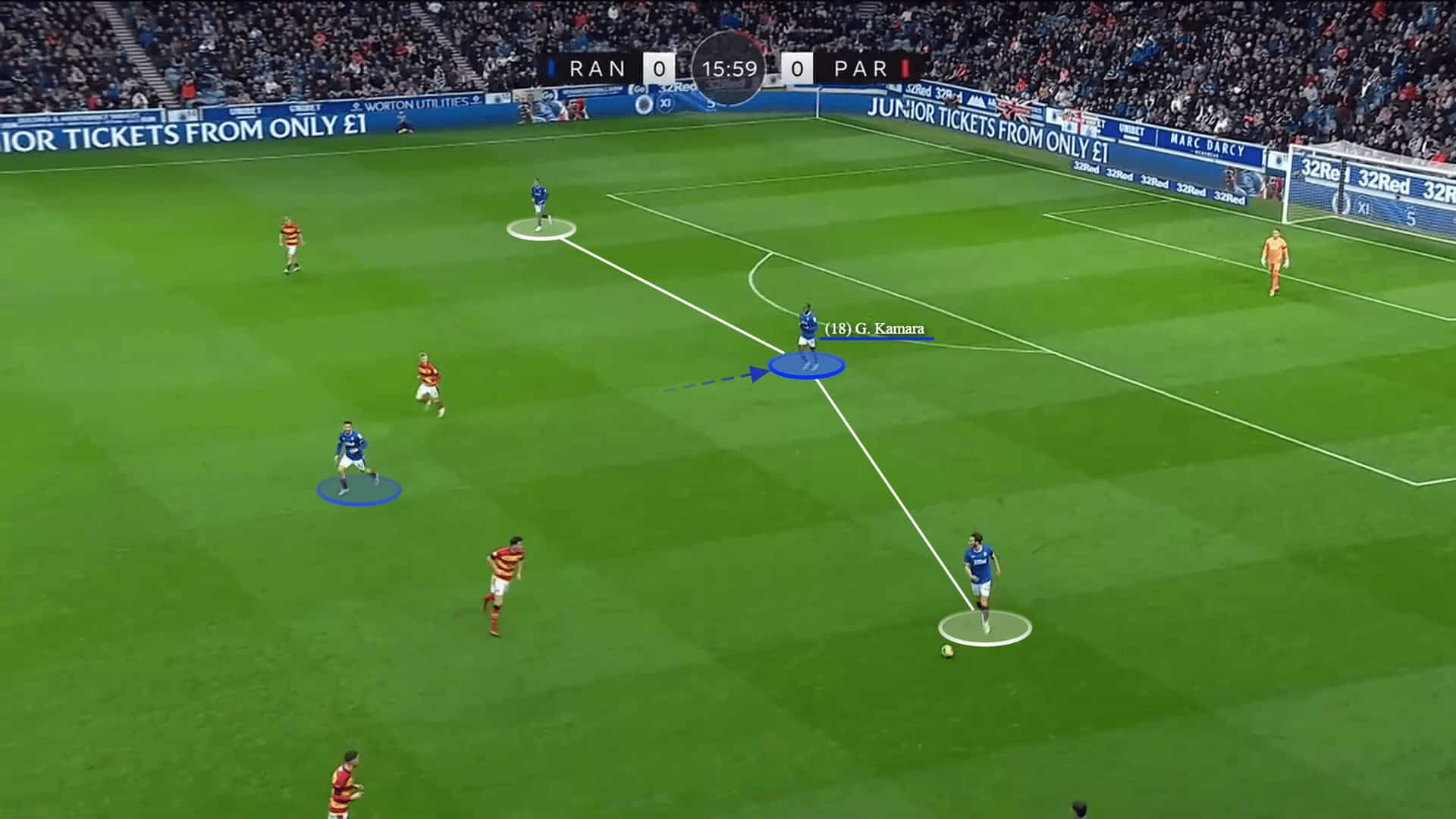
.. then Čolak drops and receives the pass and lays it off to the third man.
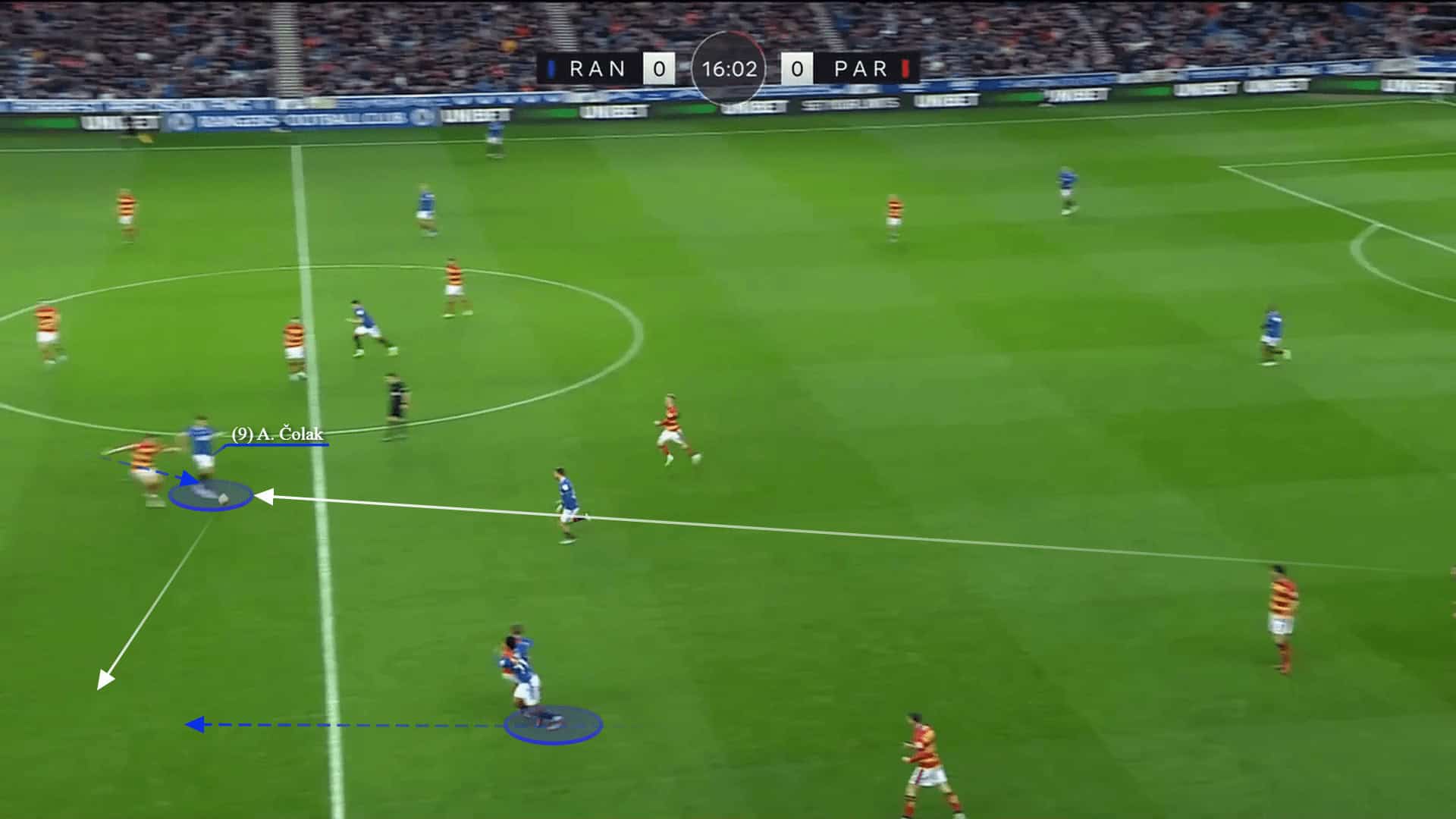
A nine as a base is to provide the overloading to isolate technique which is one of Michael Beale’s principles using the striker. Overloading one side with direct play and combinations could drag many opponents there and then switch the play to the weak side where the opposite winger is wide and the overlapping fullback is there.
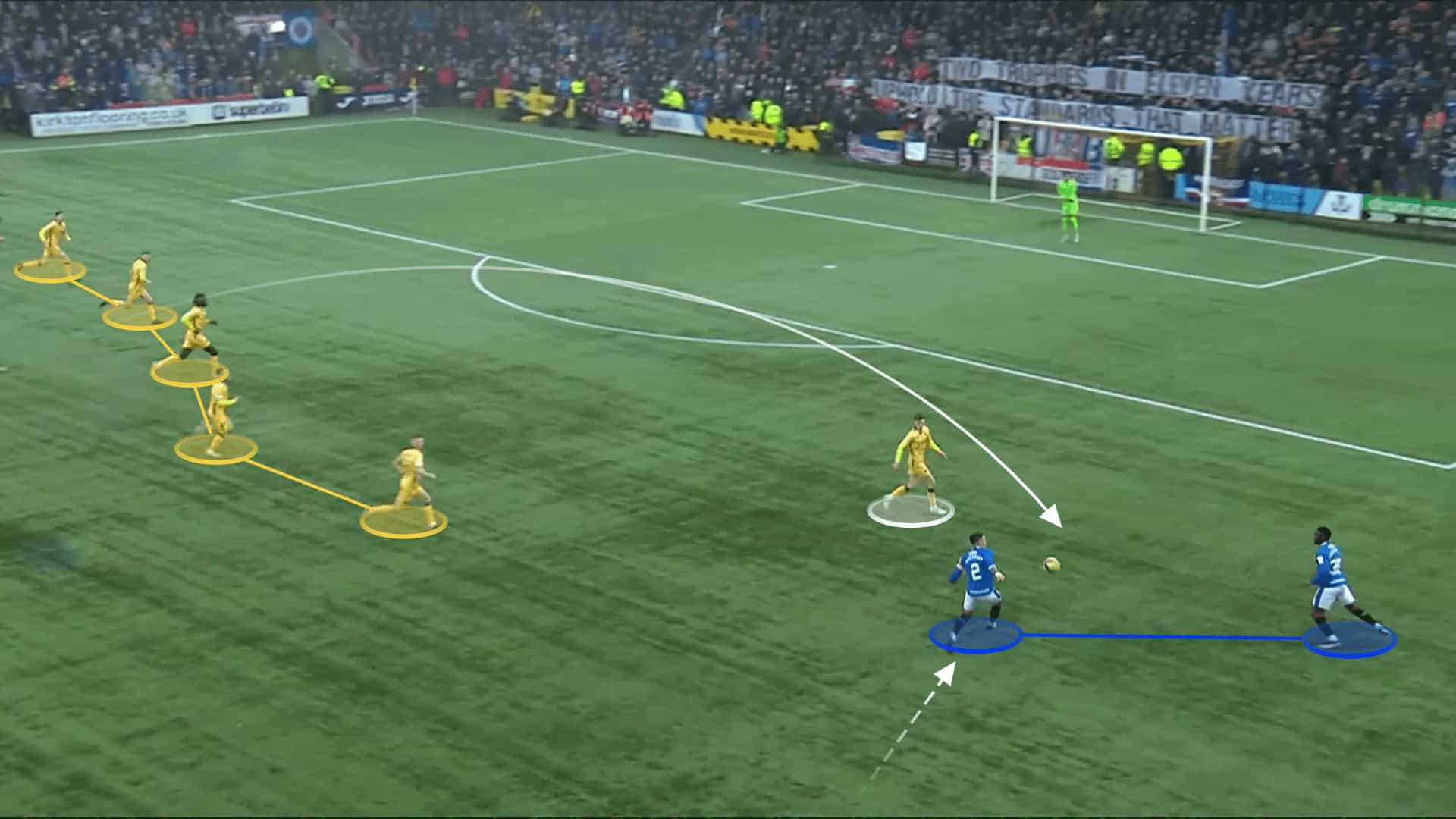
Rangers’ forwardness is not only playing through the defensive block but moving above the opposition by executing long balls to the out-wide wingers is a solution. Here, below, Sakala receives the long ball in behind the backline from the centre-back and gains the dynamic advantage over the opposition’s fullback.
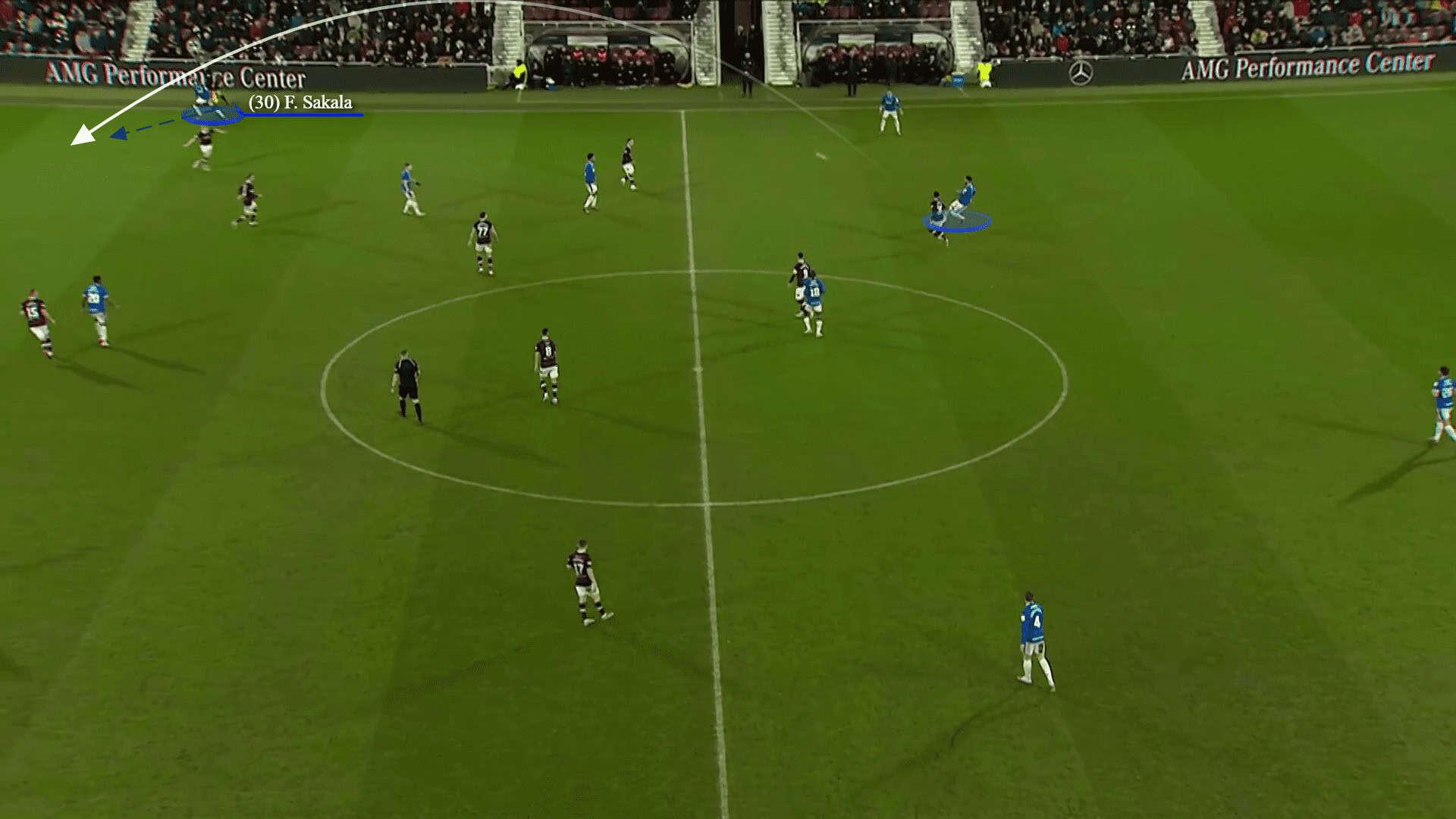
Higher on the pitch, Beale’s attacking style somehow depends on the wingers’ starting points and they vary from being out-wide to drifting to the half-spaces or even being in an asymmetric shape.
While in possession, their starting positions would have an impact on the others. e.g. occupying the half-space would drag the fullbacks inside which gives the fullbacks room to overlap and take the flank advantage to cross.
Once Rangers reach the final third, they always attempt to secure Beale’s principle of rotations as he said; “utopia for me is finding a group of players that have the freedom to rotate in the final third”
Rangers, here below, are overloading the right-hand side under the same conception of Beale’s freedom and fluidity. Controlling the flank with four players with an option to circulate to the weak side and an aid from the dropping striker creates a numerical advantage and provokes the opposition’s centre-back to leave his position.
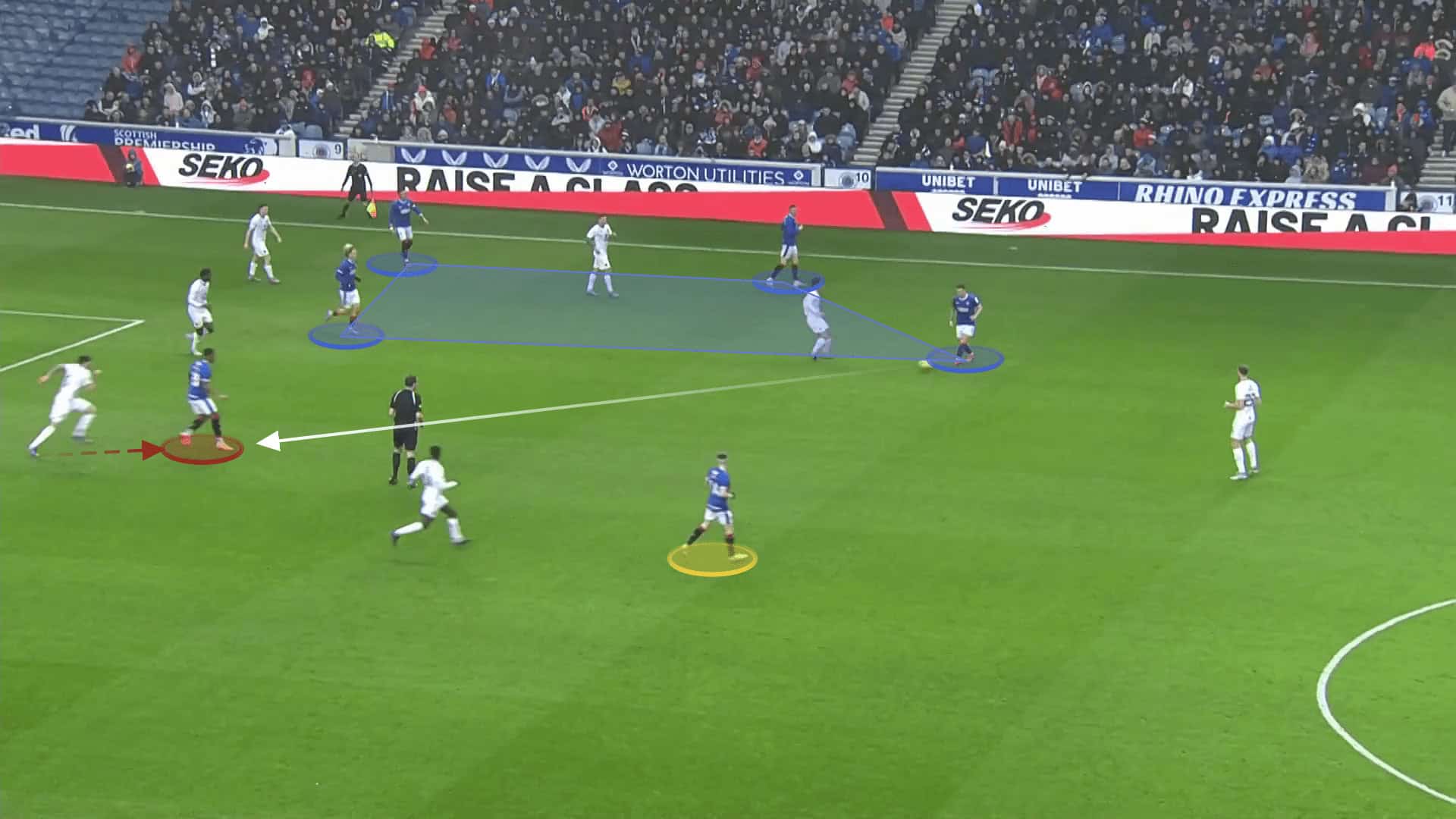
Here, Morelos combines and then cuts the ball to the left-back in a big space to decide while the opposite winger had dragged the defenders.
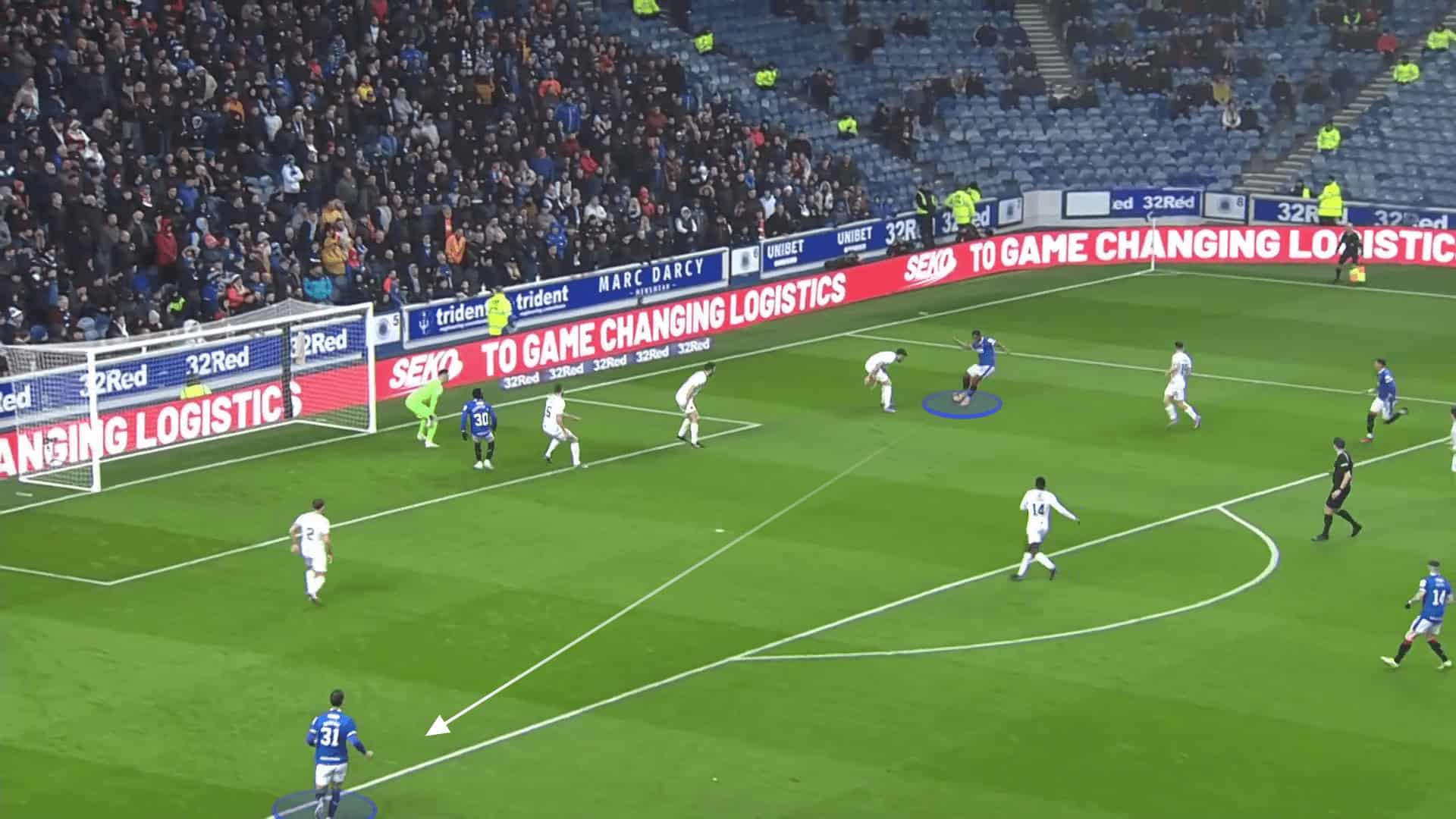
Captain James Tavernier, RB, usually plays a significant part, especially in the freedom aspect, varying between the overlapping and underlapping actions with his brilliant ability to assist and score.
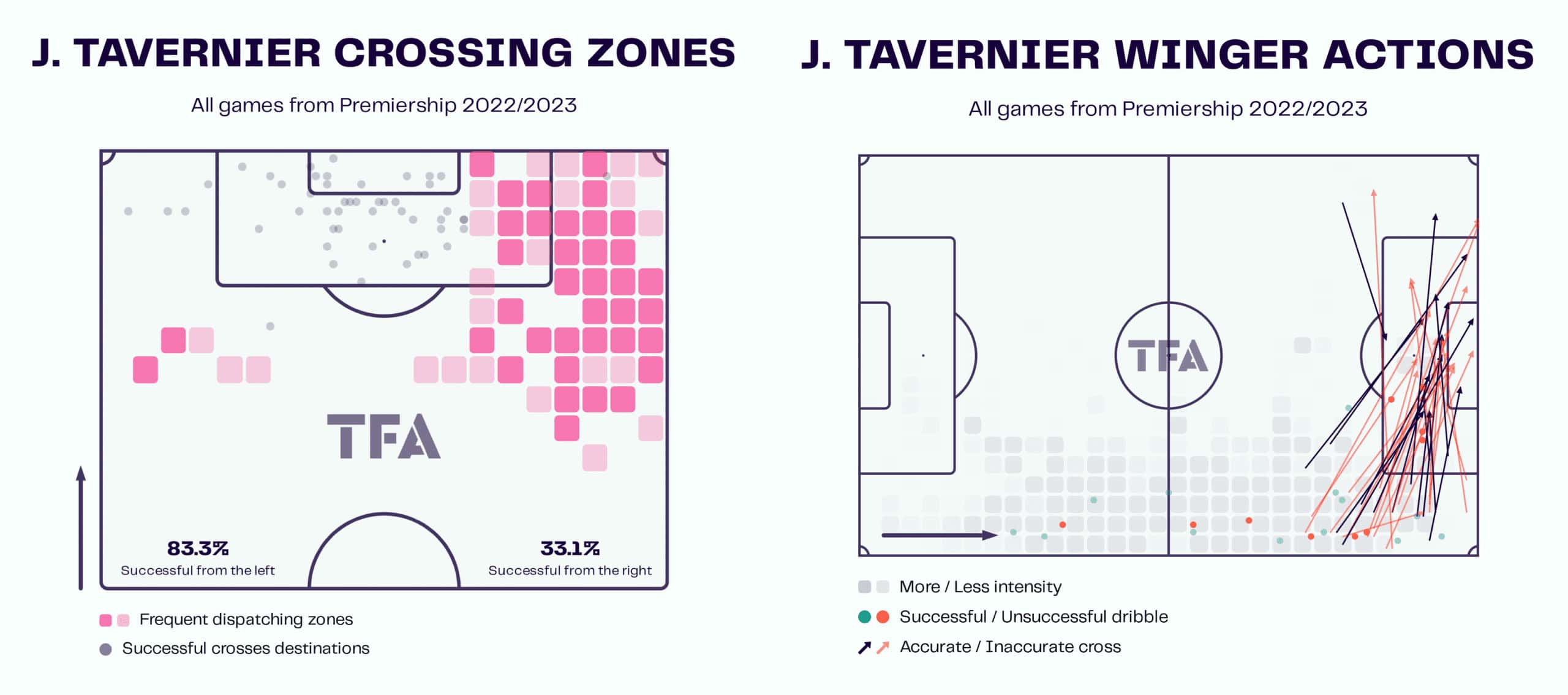
Here, while the defenders are busy with the striker and the winger, Tavernier recognises the spaces in behind and then underlaps where he receives the through pass there.
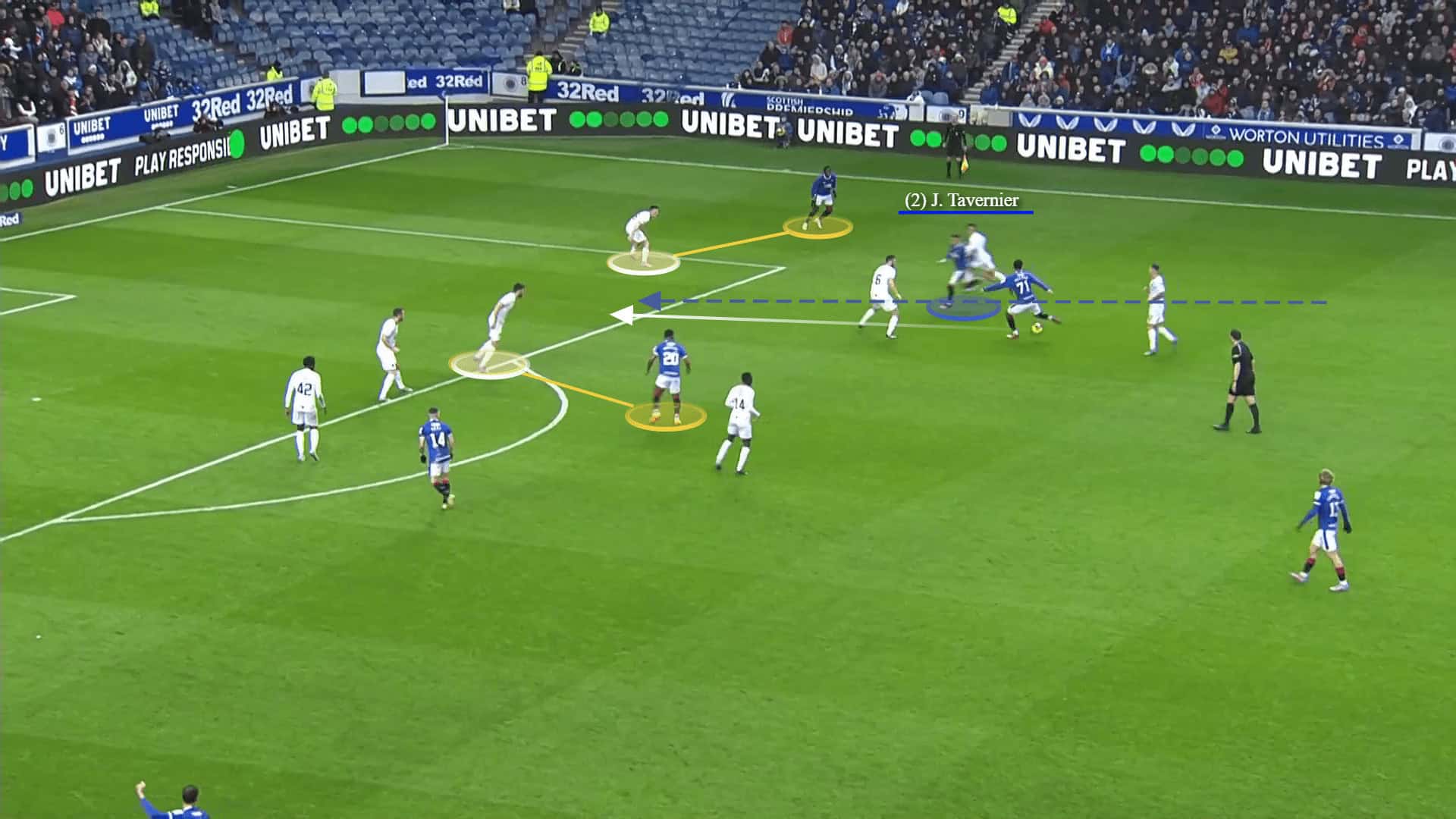
Furthermore, operating the striker in the holding play is not only for the vertical play from the back, yet he could also get involved in the wide combinations to make lays off to the third-man run as the below graphics illustrate.
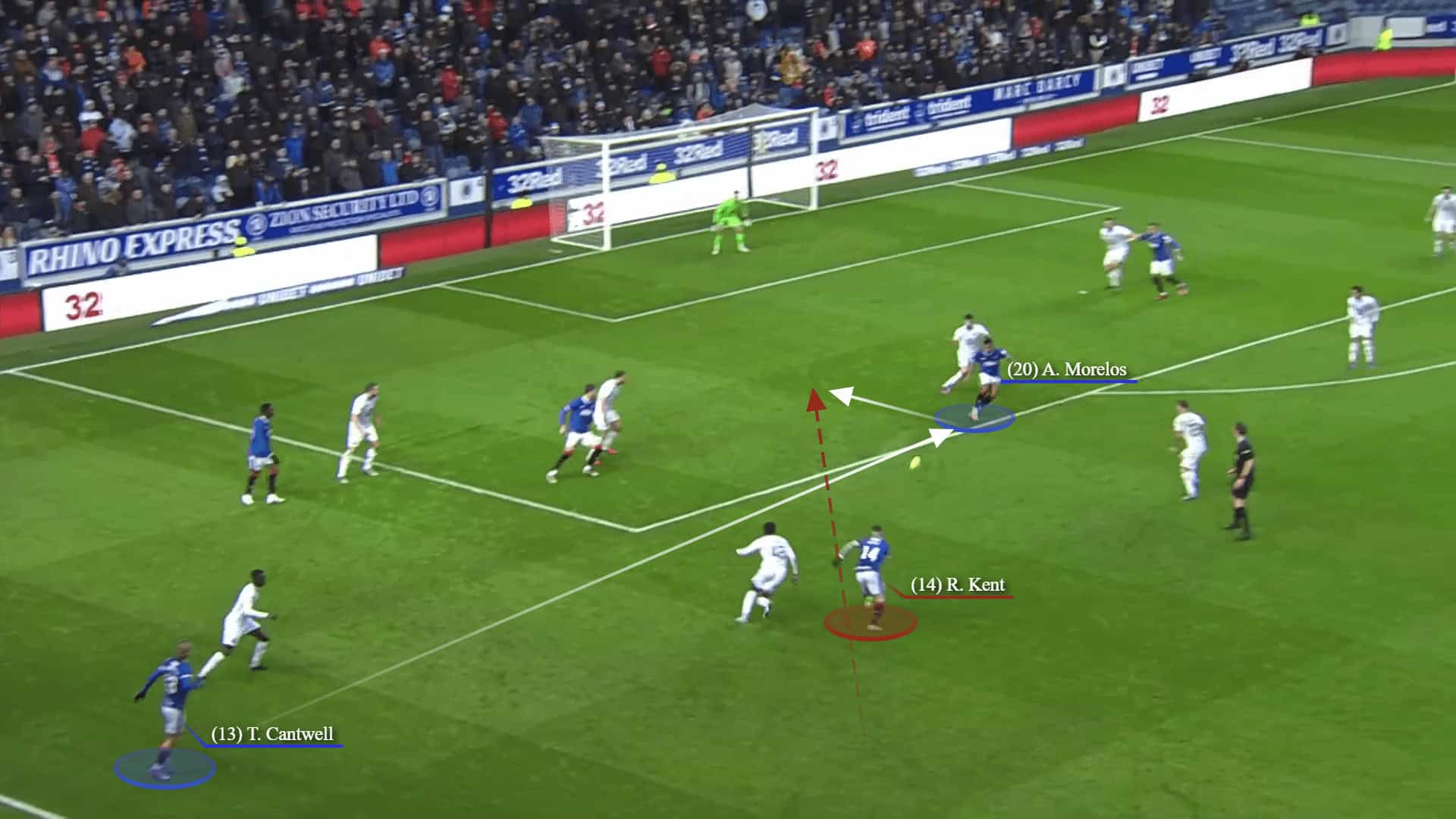
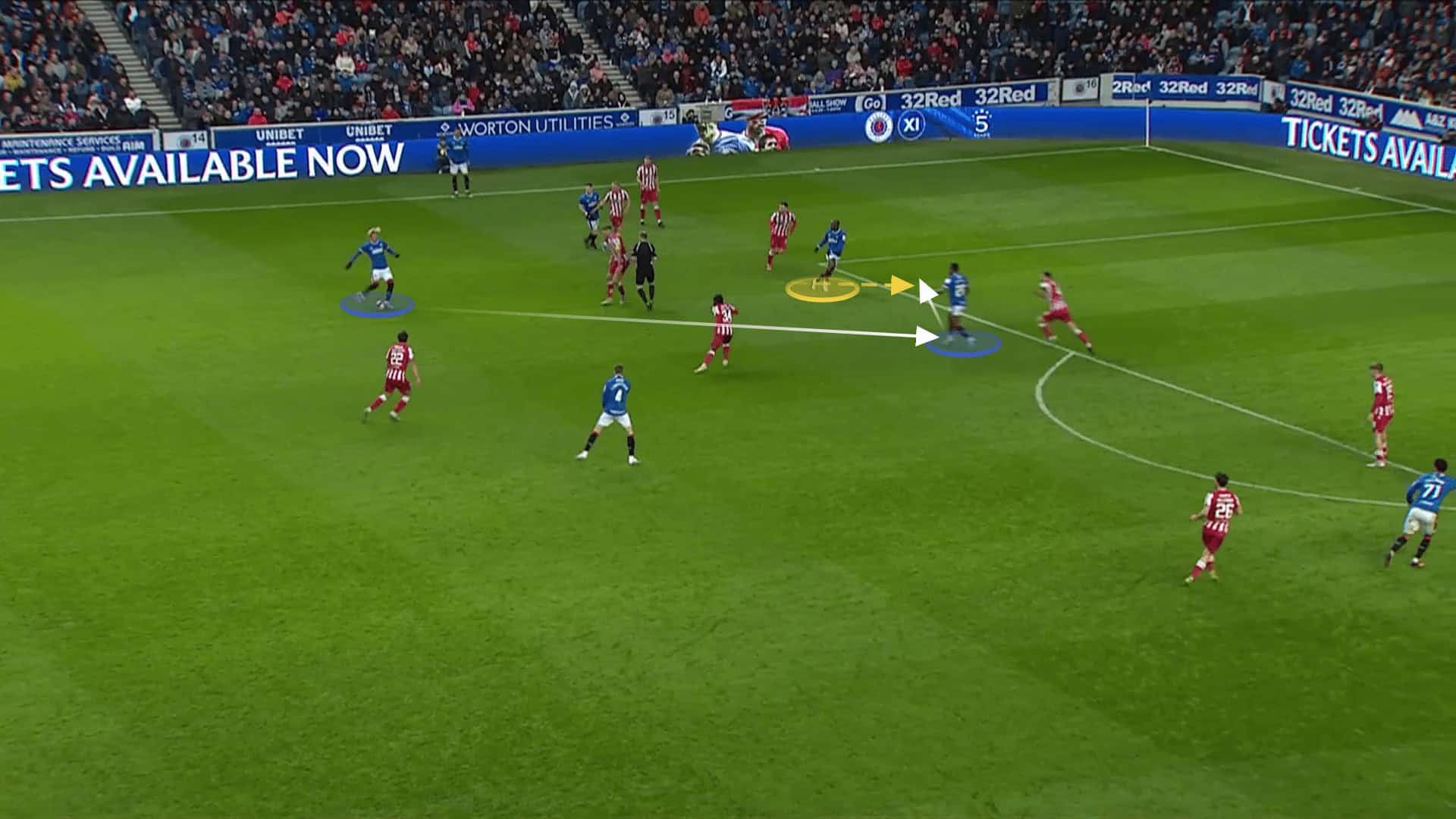
There are also variations based on the concept of rotating and side fluidity while vertical play is the mode. From his out-wide or inside position, the winger usually gets involved in third-man combinations like the below graphic when a midfielder moves higher wide to receive the left-back’s long ball and then lays the ball off to the launching third man who attacks the gaps in the backline.
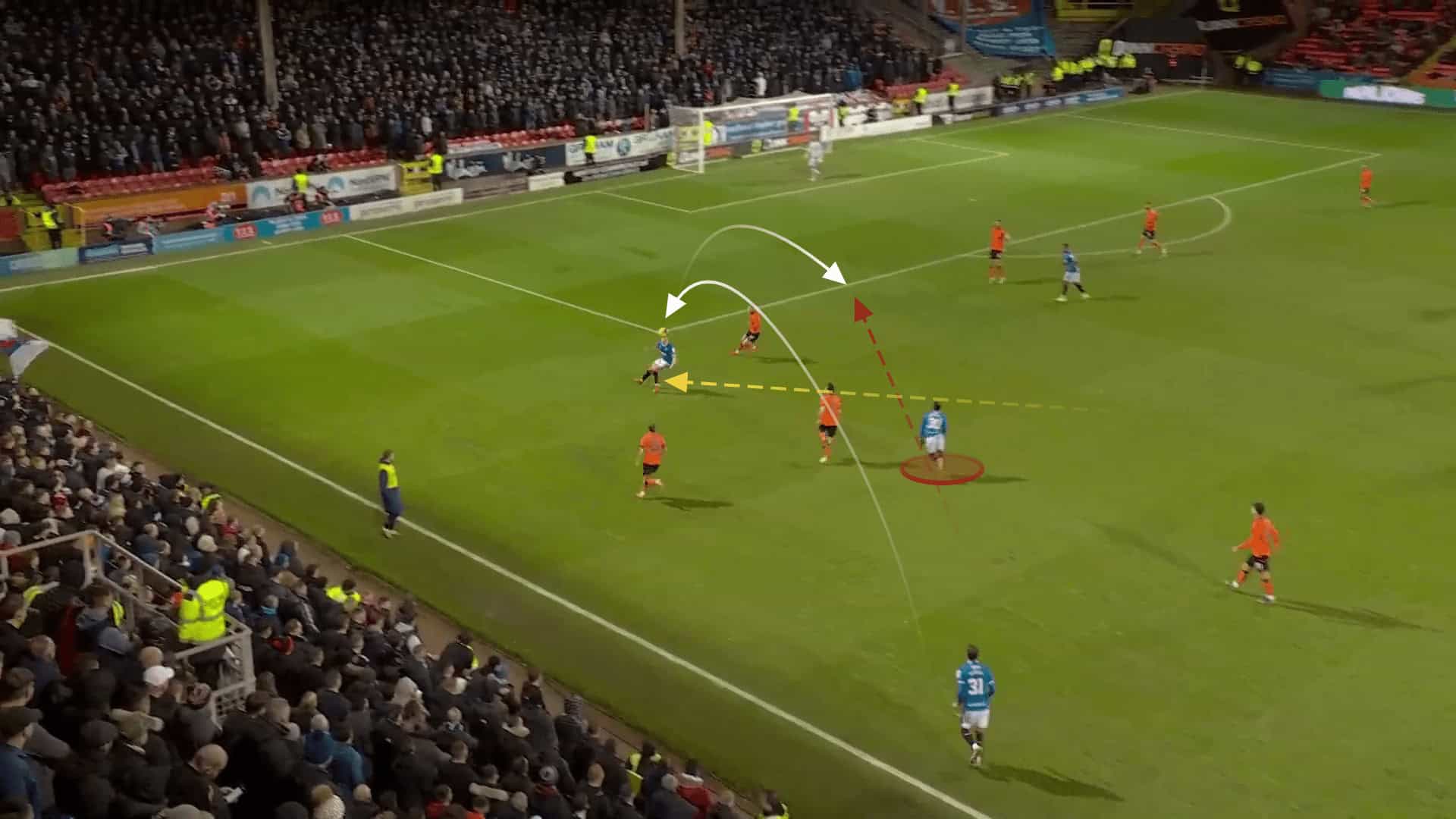
The below visualisation is Rangers’ xG map graphic under the guidance of Micheal Beale, which includes 33 goals from 35.05 xG and 0.13 xG per shot. Furthermore, they created 22.45 xA with 24 assists.
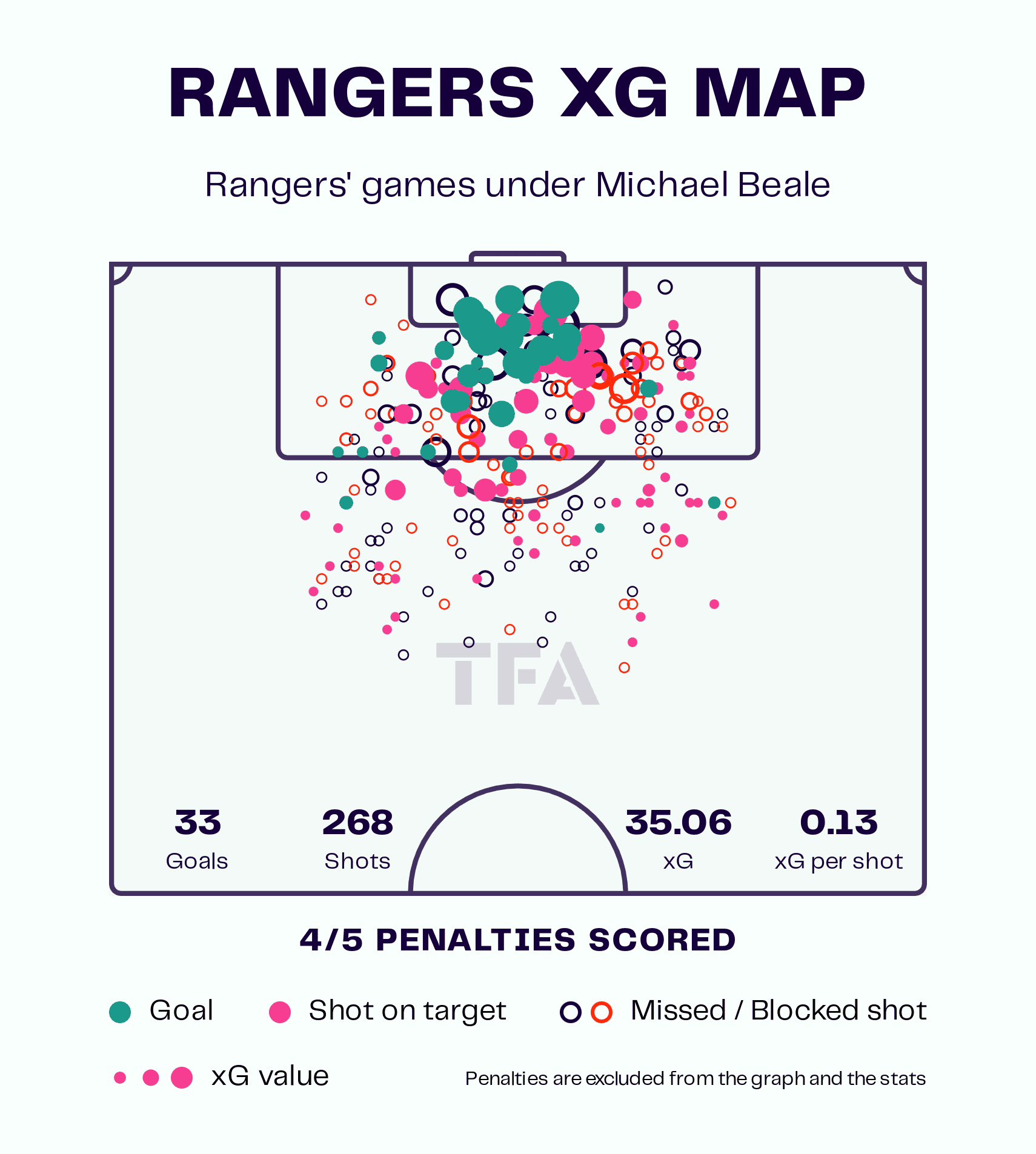
Definitely, these attacking variations need smart modern training sessions. Michael Beale is a super trainer as Steven Gerrard said before about him “It would take me 15/20 years to become as good as Michael Beale as an on-pitch coach, delivering sessions on a daily basis. So I let Mick be Mick Beale because he’s the expert.”
Next is Rangers’ defensive approach. Is the team at his standards, as he describes his defensive philosophy of “Own(ing) the pitch”, before to the Coaches’ Voice?
Out of possession
The 42-year-old wants to play in an interconnected out-of-possession organisation — he seems usually to structure his team in a narrow 4-3-3 mid-block. A better defensive organisation means less stress and less running on the players.
Commonly, Rangers with him vary between a compact 4-3-3 and 4-3-1-2 based on the opposition’s shape and building pattern. In a general view, pressing is to manipulate the opponent into traps where the defensive team is encouraged to press the area and take advantage.
Here, in the below graphic against their historical rival Celtic, Rangers implement a narrow 4-3-3 mid-block.
Celtic’s No 6 who could receive the ball with his bad body orientation, considered as a pressing trigger, is trapped, and Lundstram is ready to press him immediately. Furthermore, if the ball would reach the fullbacks, Rangers’ no. 8s are ready to move to press with the inside winger, using the touchline as an extra defender.
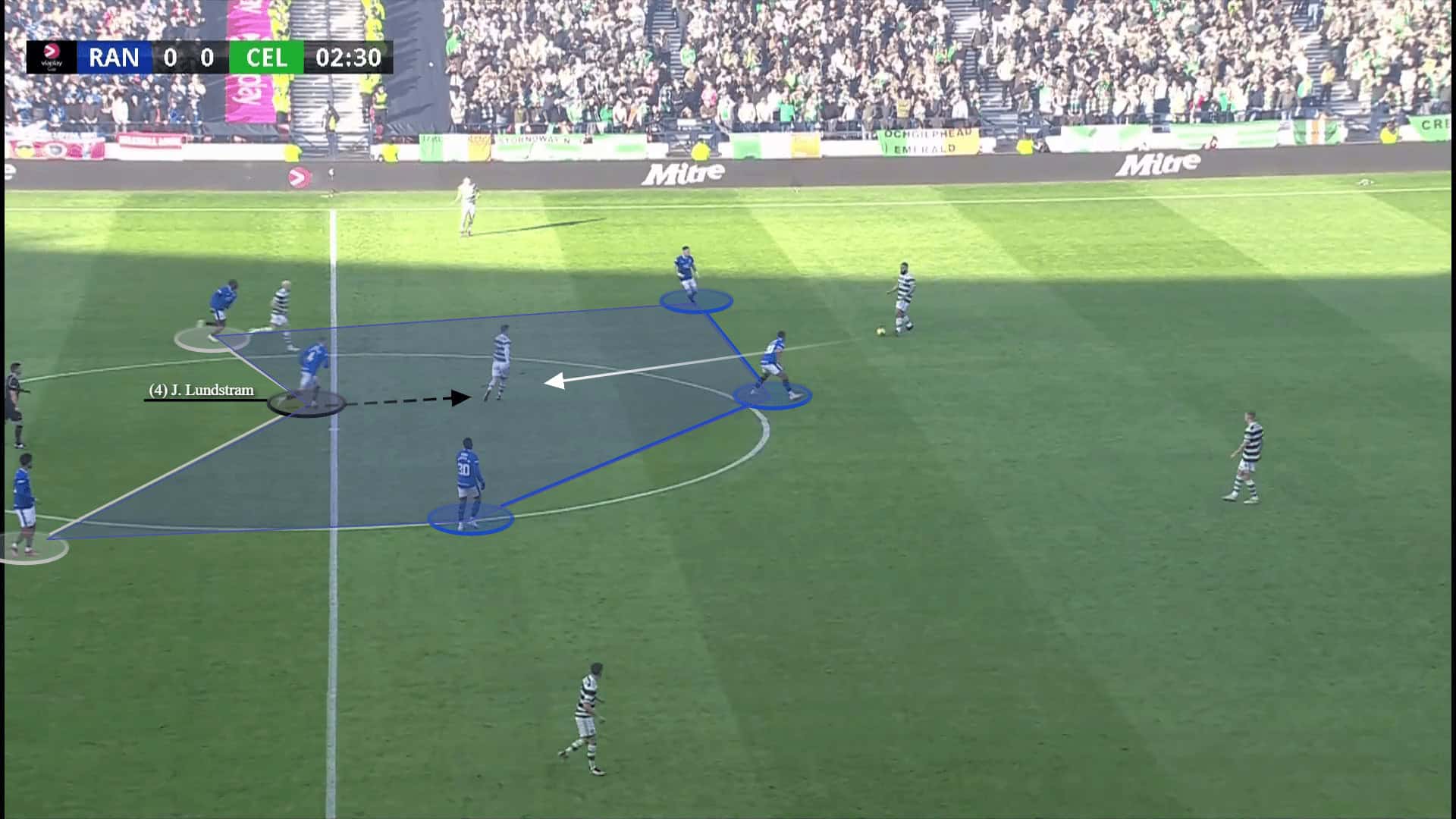
That would be changed against another team’s building styles like here below. Rangers are using a 4-3-1-2 defensive organisation, a straight marking to the opposition’s No 6 with the same trapping conception.
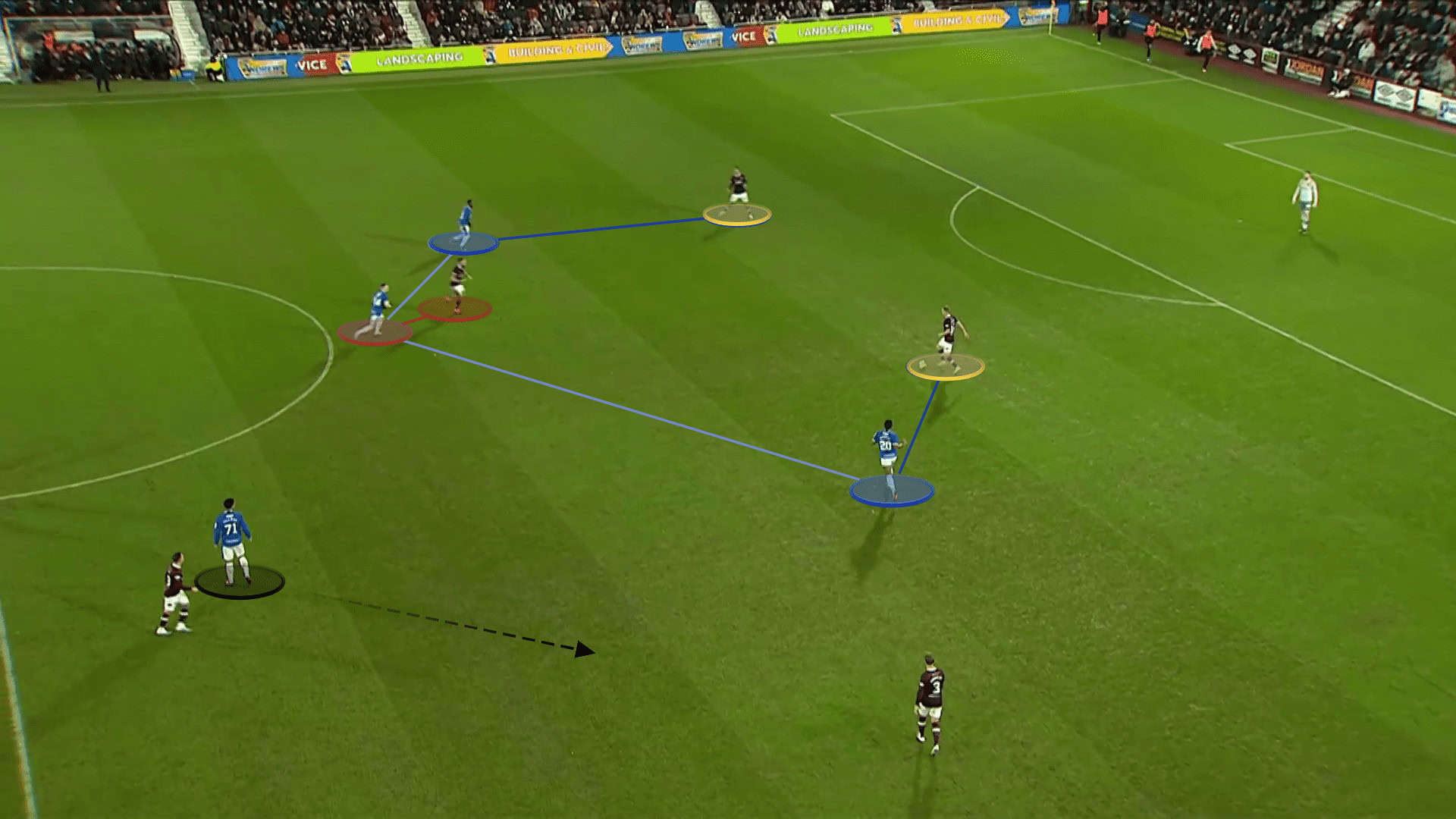
From his appointment, Rangers’ defensive approach is highlighted by the defensive territory below.
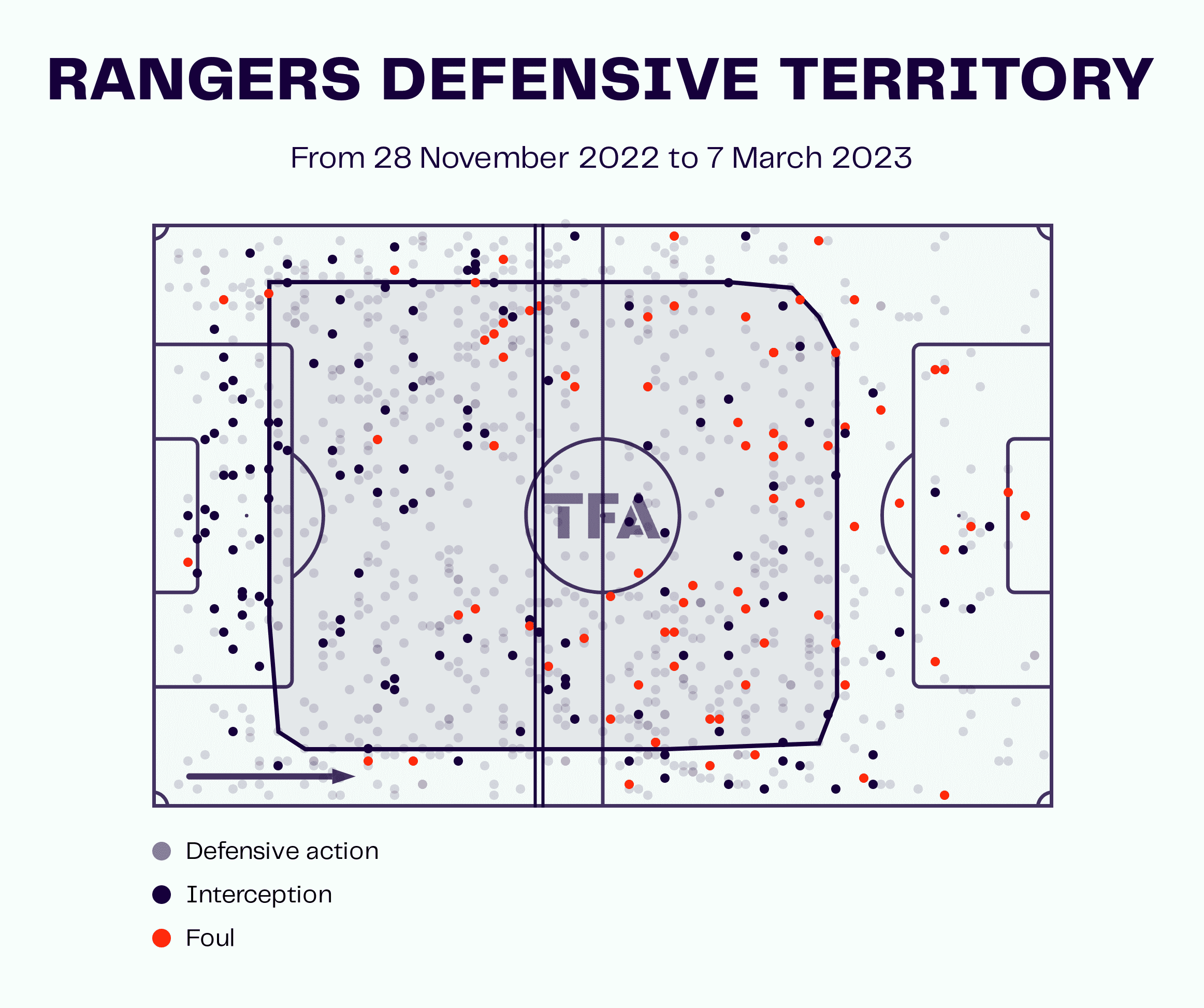
The team have some defensive issues maintaining the depth and width as the block is not solid enough yet. It may take some time for Beale to apply all his techniques at Ibrox, yet the principles already exist.
Data & vision
Basically, the range of development that Rangers need can be squeezed over the main rival Celtic. You will not go out to Europe strongly unless you control your local football.
Celtic’s evolution over Rangers can be seen in some aspects. Michael Beale will need a lot of work and some transfer windows to develop the team according to his philosophy.
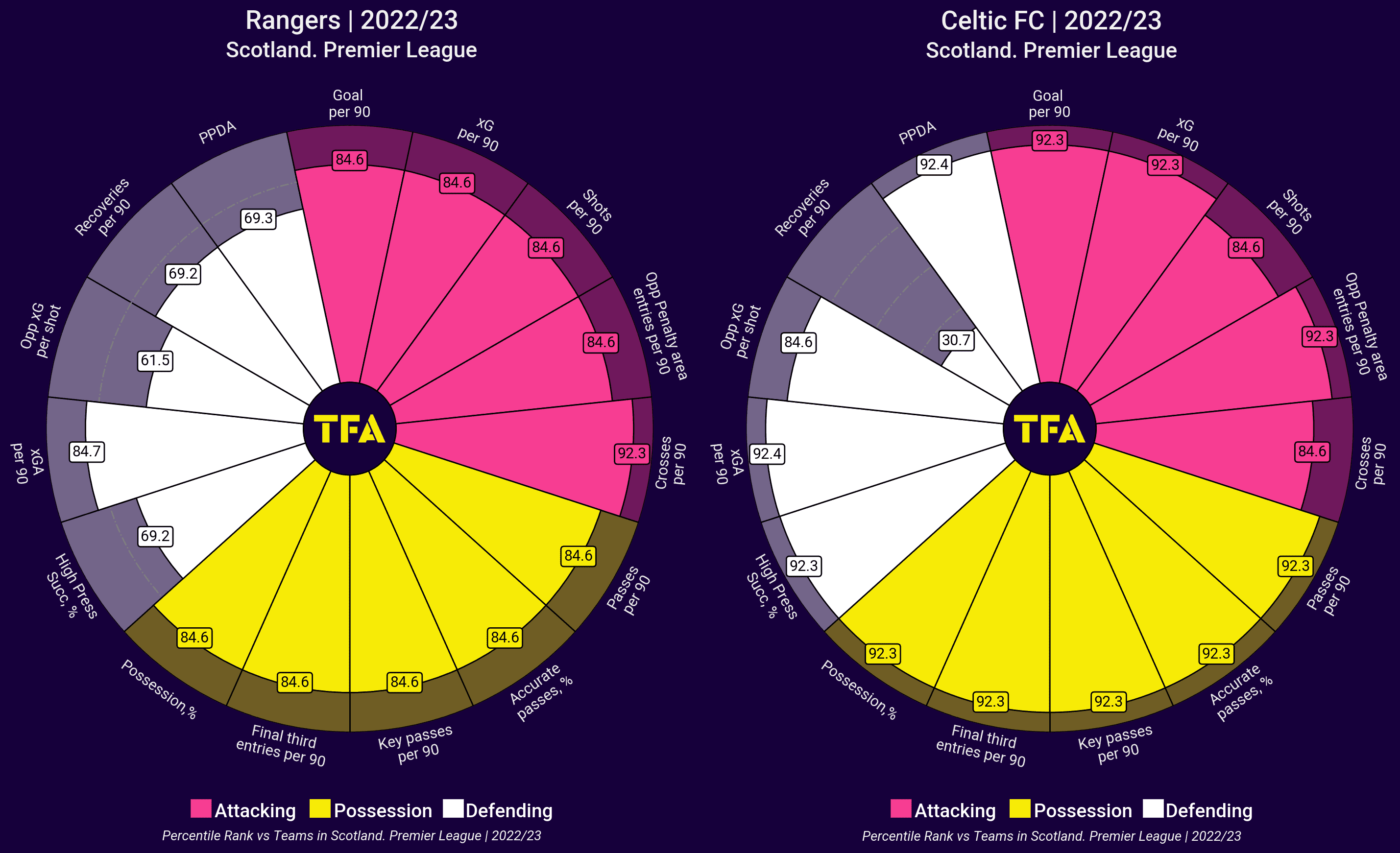
But what are Beale’s background and vision? First and foremost Micheal Beale had spent around 12 years in youth development between Liverpool, Sao Paulo and Chelsea. The emphasis here is on evolution as opposed to performance. He would be a vital mind for Rangers and their youth team.
“You arrive at a club with a history and you arrive in a moment. Unless you’re very fortunate, you’re likely to arrive at a club who’s not being doing so well,” Beale once said.
“Pushing the players on the training ground is of the utmost importance. There is a collective effort that needs to be worked together as a team, but players need to have an individual focus within team sessions. They need to know that you are working to improve them: improve the players and you’ll improve the team.”
Conclusion
In conclusion, this tactical analysis illustrates the tactics of Rangers after Michael Beale’s hiring and his attacking and defensive approaches.
Michael Beale’s vision for Rangers involves a strong focus on youth development and individual player improvement.
While Rangers have a lot of work to do to catch up to their rivals Celtic, Beale’s background and philosophy make him a valuable asset to the team.





Comments